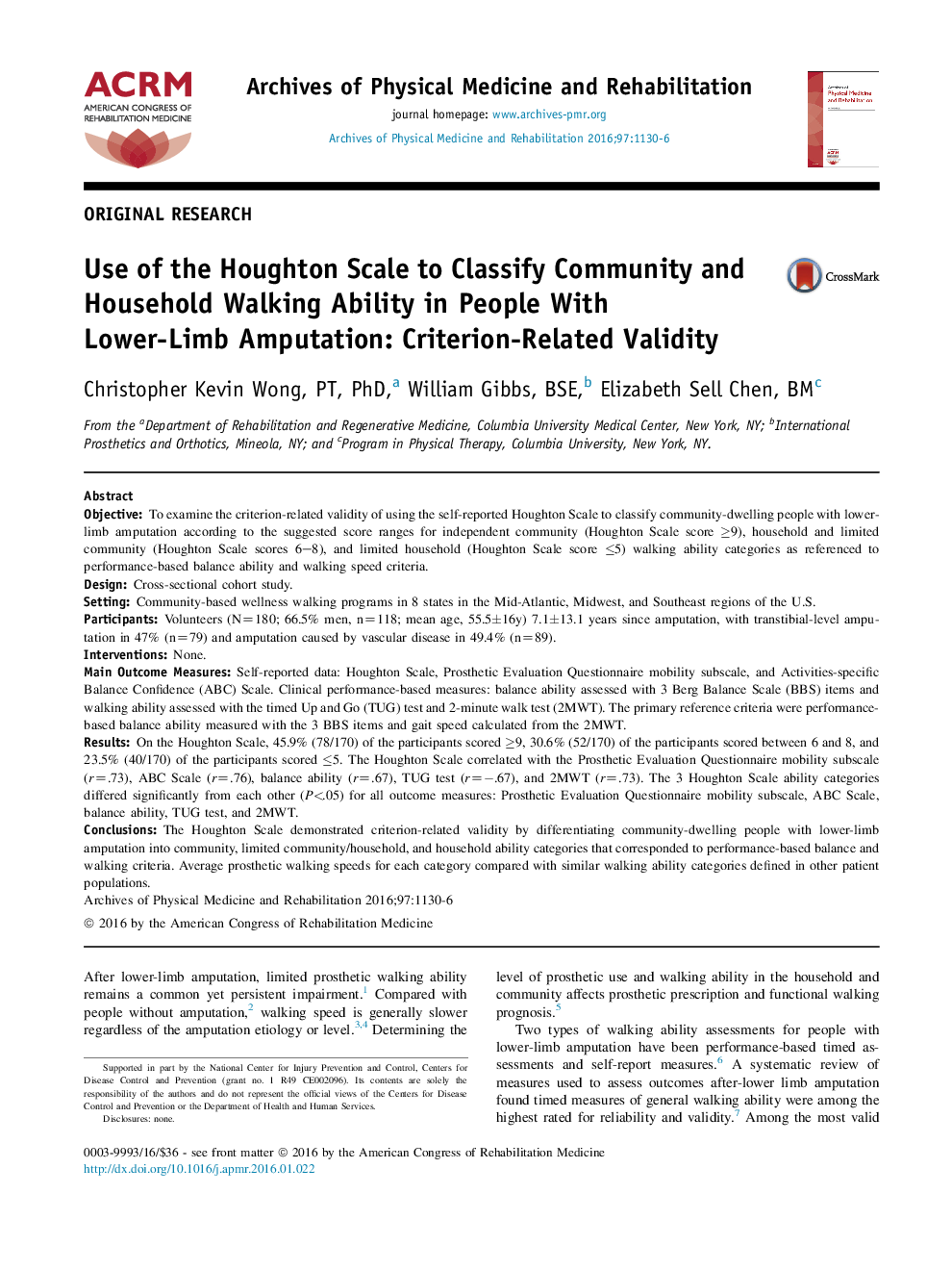| کد مقاله | کد نشریه | سال انتشار | مقاله انگلیسی | نسخه تمام متن |
|---|---|---|---|---|
| 3447836 | 1595665 | 2016 | 7 صفحه PDF | دانلود رایگان |

1.Houghton Scale scores define community and household walking ability categories.2.Houghton Scale ability categories have balance and walking criterion validity.3.Prosthetic walking ability categories parallel categories in other populations.
ObjectiveTo examine the criterion-related validity of using the self-reported Houghton Scale to classify community-dwelling people with lower-limb amputation according to the suggested score ranges for independent community (Houghton Scale score ≥9), household and limited community (Houghton Scale scores 6–8), and limited household (Houghton Scale score ≤5) walking ability categories as referenced to performance-based balance ability and walking speed criteria.DesignCross-sectional cohort study.SettingCommunity-based wellness walking programs in 8 states in the Mid-Atlantic, Midwest, and Southeast regions of the U.S.ParticipantsVolunteers (N=180; 66.5% men, n=118; mean age, 55.5±16y) 7.1±13.1 years since amputation, with transtibial-level amputation in 47% (n=79) and amputation caused by vascular disease in 49.4% (n=89).InterventionsNone.Main Outcome MeasuresSelf-reported data: Houghton Scale, Prosthetic Evaluation Questionnaire mobility subscale, and Activities-specific Balance Confidence (ABC) Scale. Clinical performance-based measures: balance ability assessed with 3 Berg Balance Scale (BBS) items and walking ability assessed with the timed Up and Go (TUG) test and 2-minute walk test (2MWT). The primary reference criteria were performance-based balance ability measured with the 3 BBS items and gait speed calculated from the 2MWT.ResultsOn the Houghton Scale, 45.9% (78/170) of the participants scored ≥9, 30.6% (52/170) of the participants scored between 6 and 8, and 23.5% (40/170) of the participants scored ≤5. The Houghton Scale correlated with the Prosthetic Evaluation Questionnaire mobility subscale (r=.73), ABC Scale (r=.76), balance ability (r=.67), TUG test (r=−.67), and 2MWT (r=.73). The 3 Houghton Scale ability categories differed significantly from each other (P<.05) for all outcome measures: Prosthetic Evaluation Questionnaire mobility subscale, ABC Scale, balance ability, TUG test, and 2MWT.ConclusionsThe Houghton Scale demonstrated criterion-related validity by differentiating community-dwelling people with lower-limb amputation into community, limited community/household, and household ability categories that corresponded to performance-based balance and walking criteria. Average prosthetic walking speeds for each category compared with similar walking ability categories defined in other patient populations.
Figure optionsDownload high-quality image (146 K)Download as PowerPoint slide
Journal: Archives of Physical Medicine and Rehabilitation - Volume 97, Issue 7, July 2016, Pages 1130–1136